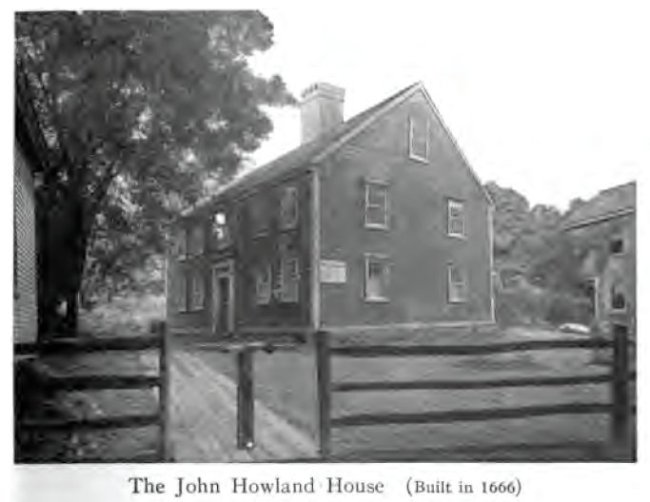Here’s Why Alec Baldwin and I Owe Our Lives to a Flimsy Piece of Rope
This Thanksgiving, I’m thankful for a non-descript piece of rope that dangled off the back of the Mayflower in 1620, without which I would not exist. Curious? Hang on.
In September of 1620, a 21-year-old Englishman stepped aboard the Mayflower without the slightest clue of what was in store. His name was John Howland. The “New World” toward which he was headed represented a new beginning, but it also presented some serious dangers. Indeed, circulating the ship was speculation of starvation, disease, and savagery. As it turns out, these fears were well founded.
Howland was an indentured servant, which, if my recollection of American history serves me correctly, meant he was in some serious debt. His conditions were far better than those of a slave, but it’s worth noting that when John Howland came to America, he was not a free man.
After months of logistical and financial shenanigans, the Mayflower set sail on September 6, 1620. Unsurprisingly, the journey SUCKED. Strong winds and severe storms kept all 102 passengers off the main deck and tightly cramped into the decks below for weeks at a time. Food and supplies were scarce, turbulent waves rocked the ship night and day, disease spread, and it smelled freaking awful. Not exactly your average cruise through the Bahamas…
With all this in mind, Howland needed a breath of fresh air. Against orders, he climbed up the ladder to the main deck. Immediately drenched, Howland took in a few deep breaths of glorious fresh air while waves crashed around him.
And then, out of nowhere, a gust of wind blew him overboard.
As Howland hit the Atlantic Ocean, he was a dead man. See, ships like the Mayflower don’t just turn around like some Kawasaki Jet Ski – especially in a storm. It was cold, and the waves likely made it impossible to see. All bad news.
But then, a frantic Howland finds of a piece of rope dragging behind the ship, and desperately grabs it with all the strength he can muster. This rope is technically called a “Topsail Halyard,” which sounds very fancy. Anyway, the Mayflower was moving so fast and pulled him so hard that the rope dragged him nearly 10 feet underwater. He was quite literally hanging on for his life!
Moments later, members of the crew found Howland in the water and pulled him aboard. He was sick for weeks thereafter – a small price to pay for cheating death. The sequence of events that transpired minutes before was nothing short of a miracle.

“Pilgrim Overboard” by Dr. Mike Haywood. The pilgrim-looking dude at the bottom would be John Howland…
In November of 1620, the Mayflower landed in Massachusetts, which is hundreds of miles north of the intended destination: Virginia. Uhh… oops.
It didn’t get any easier when the passengers found shore. Howland was part of a small group that first disembarked the ship and looked for a settlement site. Unfortunately, the Northeast weather was far colder than anyone expected. Faced with below-freezing temperatures, inadequate clothing, and wet shoes, several members of this group died within hours of hitting land. Half of the 102 passengers died that winter.
That spring, John Howland’s master died of a stroke. This made him a free man.
What he did with that freedom makes his story worth telling. A few years later, John married a much younger woman named Elizabeth Tilley. He earned his living selling furs, and served his community in the militia and in local politics. By all accounts, he was a passionate follower of Jesus Christ – which is the precise reason his master and fellow passengers came to America in the first place.
John and Elizabeth lived in a house that stands to this day. In fact, my dad took me there when I was in high school and I recall thinking the whole thing was “lame.” But in retrospect, it was actually amazing. The house sits at 33 Sandwich Street, Plymouth, Massachusetts. Google it!
John and Elizabeth Howland had 10 children, which went on to give them 88 grandchildren. 88 GRANDKIDS! Consequently, millions of Americans can trace their lineage back to John Howland. Here’s a few notable descendents: President Franklin Delano Roosevelt, the entire Bush family, Henry Longfellow, Ralph Waldo Emerson, Brigham Young, Chevy Chase, and yes, Alec Baldwin.
Every last one of us descendants can rightly declare “our faithers were Englishmen which came over this great ocean, and were ready to perish in this willdernes; but they cried unto ye Lord, and he heard their voyce, and looked on their adversitie. Let them therfore praise ye Lord, because he is good, & his mercies endure for ever”. – William Bradford
God had a vision for John Howland, and his story perfectly captures what makes this country so great.
Of course, none of it would have been possible without a flimsy piece of rope that just so happened to be hanging off the back of the Mayflower at the precise moment when he plunged into the Atlantic Ocean.
Heck, even Alec Baldwin has to be impressed by that…
Happy Thanksgiving.
“In a mighty storm, a lusty young man (called John Howland) coming upon some occasion above the gratings, was, with a seele of the ship thrown into the sea; but it pleased God that he caught hold of the topsail halyards, which hung overboard, and ran out at length; yet he held his hold (though he was sundry fathoms under water) till he was hauled up by the same rope to the brim of the water, and then with a boat hook and other means got into the ship again, and his life saved; and though he was something ill with it, yet he lived many years after, and became a profitable member both in church and commonwealth.” – Firsthand account by fellow passenger William Bradford


http://www.iwoc.co.uk/mens/Nike-air-max-hype.html Nike air max hype
LikeLike